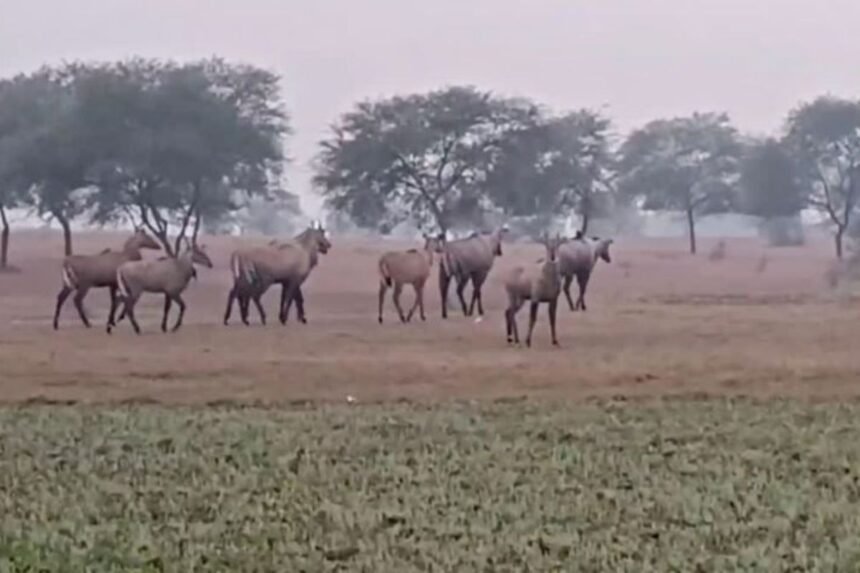Garhwa, May 05, 2025: Farmers across several blocks of Garhwa district are facing severe losses due to recurring crop damage caused by herds of nilgai (blue bulls), prompting urgent action from the Forest Department to relocate the animals. In the absence of proper irrigation and with erratic rainfall already burdening agriculture, the unchecked movement of nilgais has emerged as a serious agrarian crisis.
Nilgai Attack on Crops Deepens Agrarian Crisis in Garhwa
Farmers in blocks like Kandi, Bardiha, Bishunpurwa, and Bhaunathpur report consistent damage to standing crops due to the increasing movement of nilgai herds. These animals enter farmland in groups, trampling standing crops and leaving fields devastated overnight.
With rain-fed agriculture being the primary practice in these regions and minimal irrigation infrastructure, the loss of even a small harvest hits hard. Farmers state that nilgai attacks have made cultivation unsustainable, and some are now considering leaving agriculture altogether.
Farmers Forced Into Night Vigil to Protect Fields
In Karnpura village under Bishunpurwa block, vegetable farmers have been hit particularly hard. To protect their crops, many are forced to guard their fields through the night. Makeshift barriers using bamboo fencing, hanging bells, and bulbs powered by battery are being used in a desperate attempt to deter the animals.
“We’re not only losing crops but also sleep. Farming has become a 24-hour battle against wildlife, especially nilgai herds,” said Ramesh Kumar, a local farmer. Agricultural losses due to wild animals are pushing many small-scale farmers into debt.
Forest Department Plans to Relocate 1,000 Nilgais
Acknowledging the severity of the problem, the Garhwa North Forest Division has chalked out a plan to capture and relocate nearly 1,000 nilgais from the affected areas. According to the Divisional Forest Officer (DFO), official communication has been initiated to seek necessary approvals for carrying out this massive operation.
The plan includes the use of indigenous trapping techniques, cage deployment, and human resource mobilization for relocation to forest zones with less human-animal conflict. The department is also in the process of designing a compensation mechanism for farmers who have already incurred crop losses due to wildlife.
“We have identified key conflict zones and are ready to begin relocation once we receive high-level clearance,” said the forest officer. Preventive measures and long-term habitat solutions are also being evaluated to avoid recurrence of the issue.
Why Nilgai Conflict Is Escalating in Jharkhand’s Rural Belt
The proliferation of nilgais in semi-urban and rural areas is being attributed to the shrinking of their natural habitat and the absence of natural predators. In recent years, wildlife encroachment into agricultural fields has seen an uptick across Jharkhand, particularly in Palamu and Garhwa districts.
Nilgais are protected under Schedule III of the Wildlife Protection Act, 1972, which makes their culling illegal without government sanction. This legal barrier has complicated direct action by villagers, leading to growing dependence on administrative intervention.
Stay Updated with the Latest News in Jharkhand!
Be the first to know every important news, from Jharkhand Politics to Jharkhand News. We keep you prepared for every moment. Follow us for Breaking News in Jharkhand and never miss out on Jharkhand Trending Topics!
Stay connected with Jharkhand Headlines!




